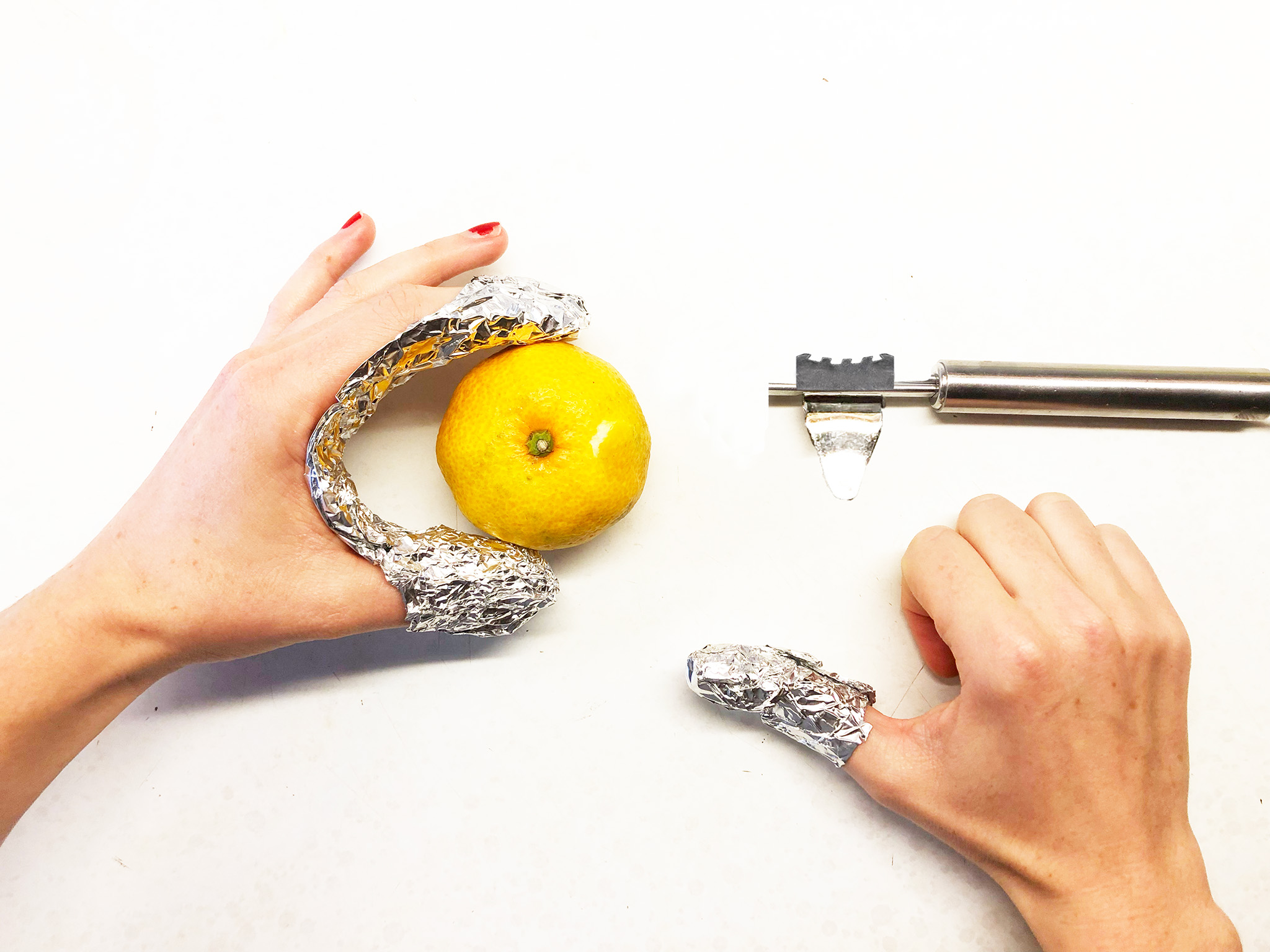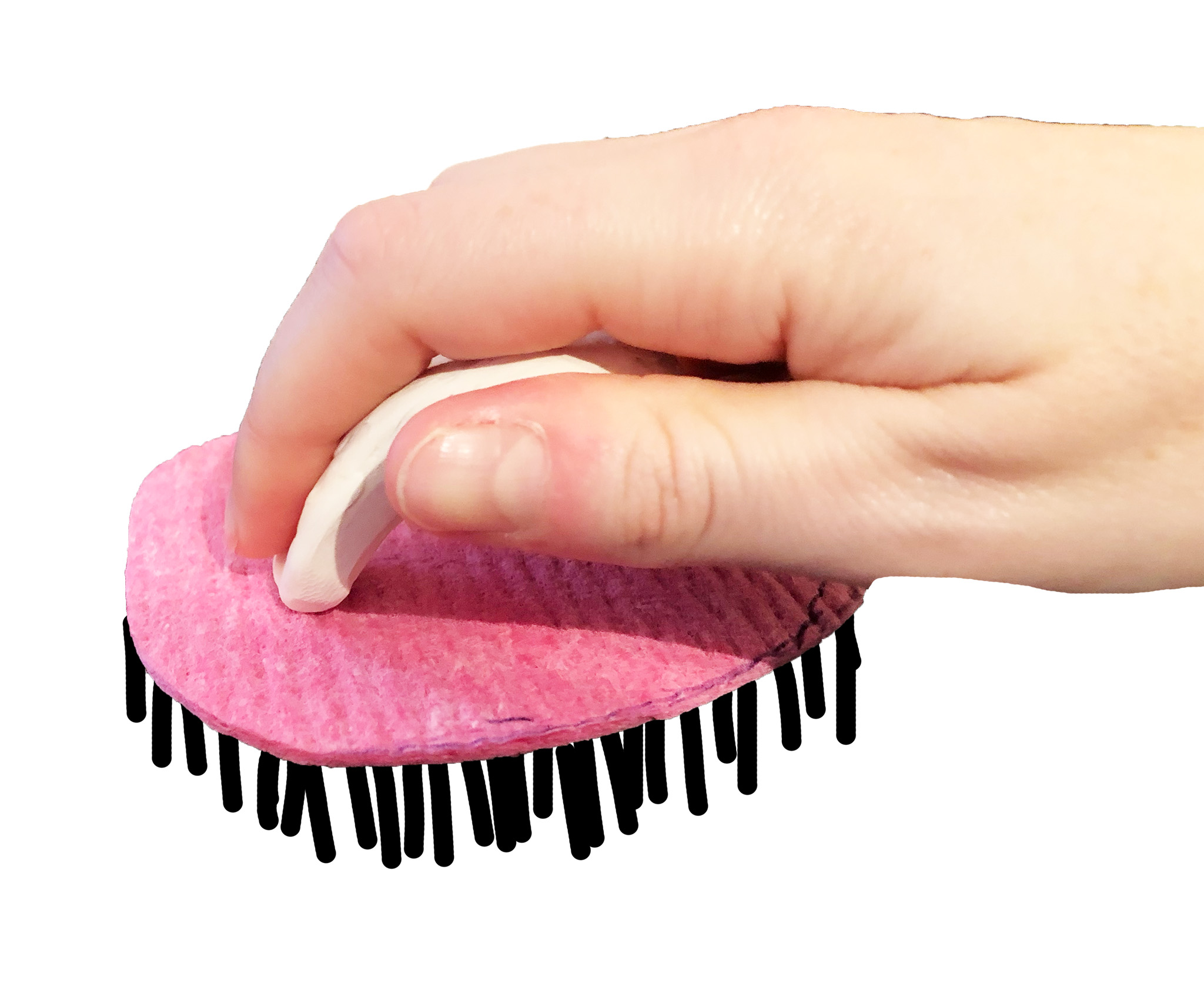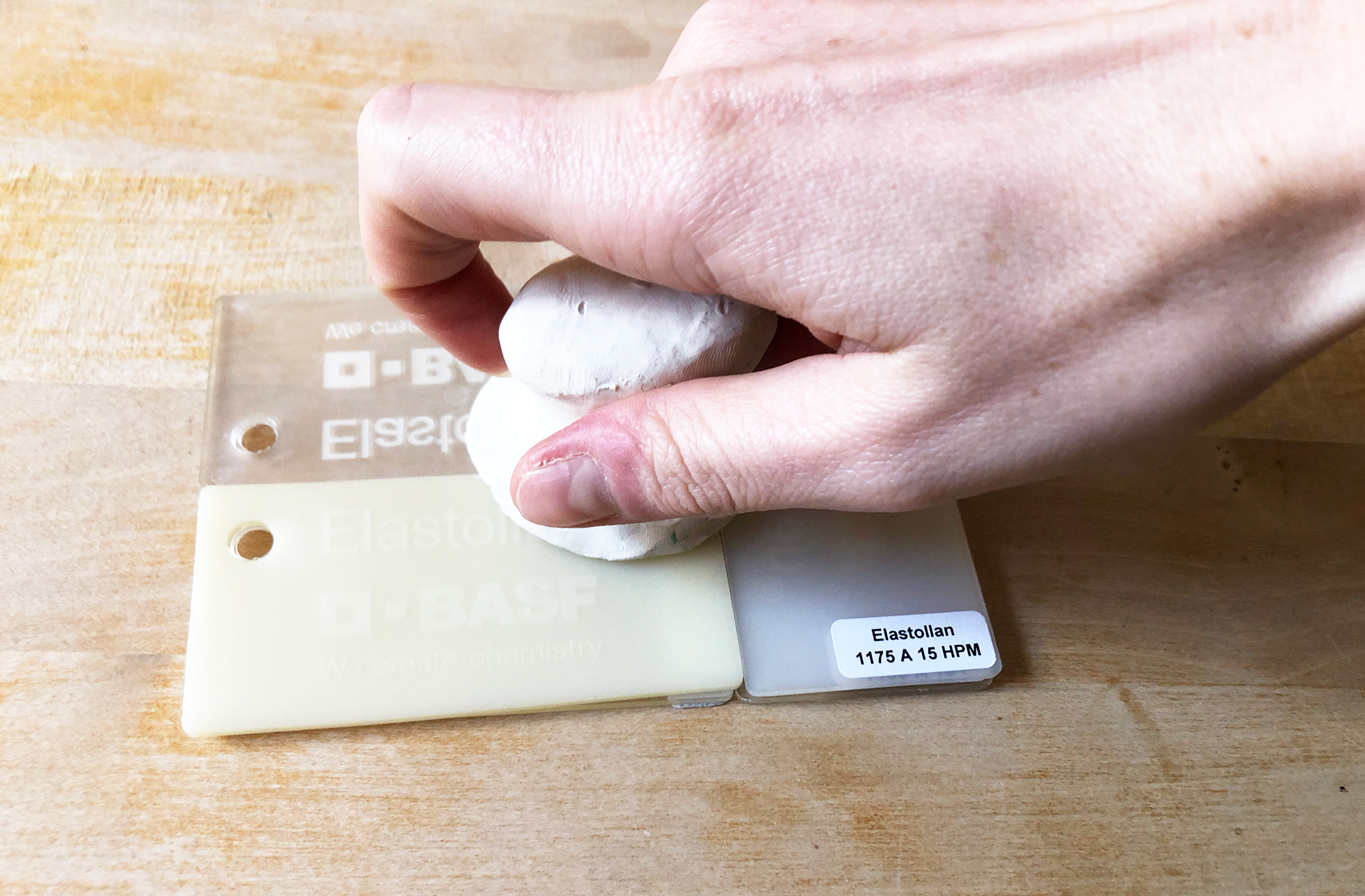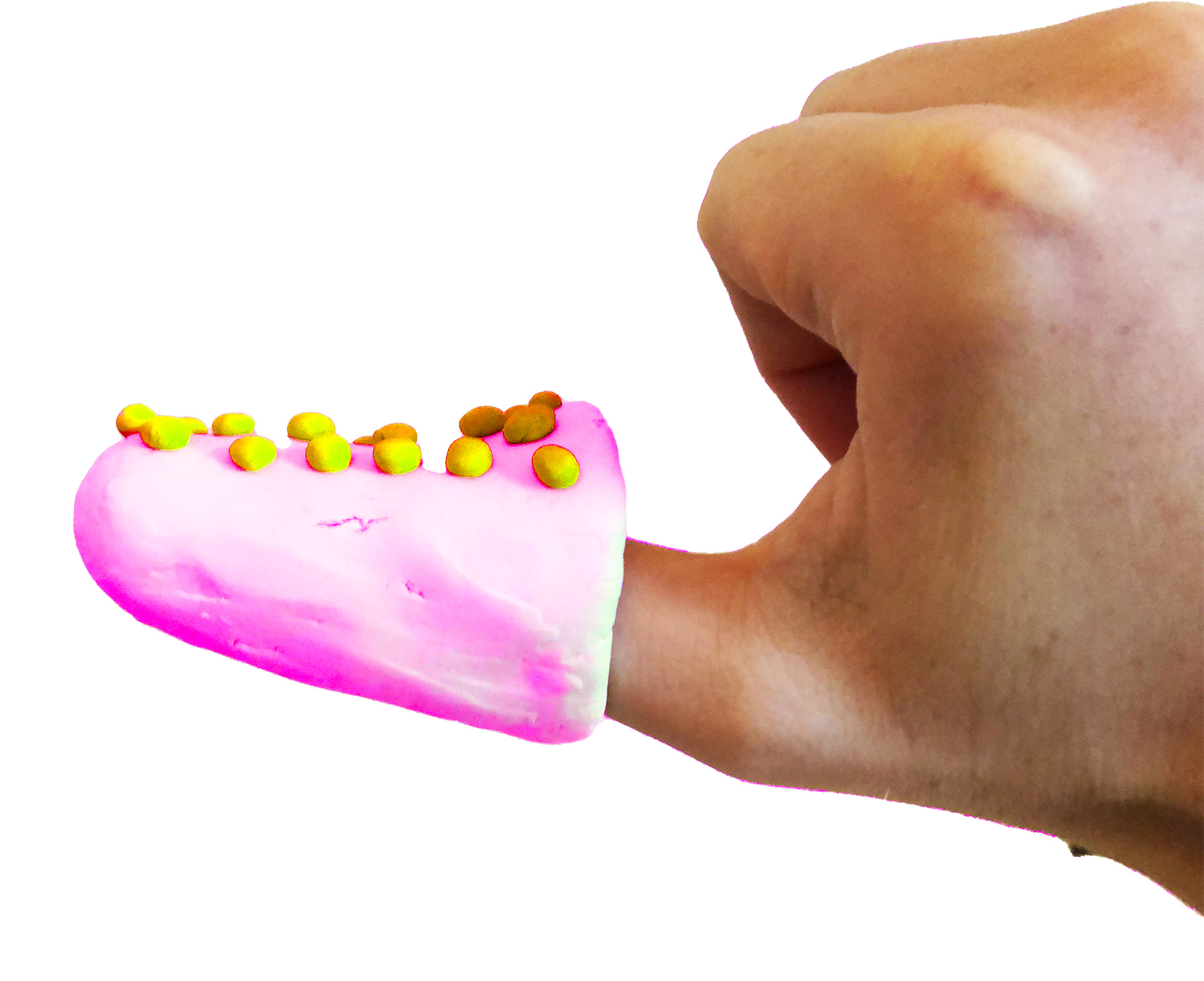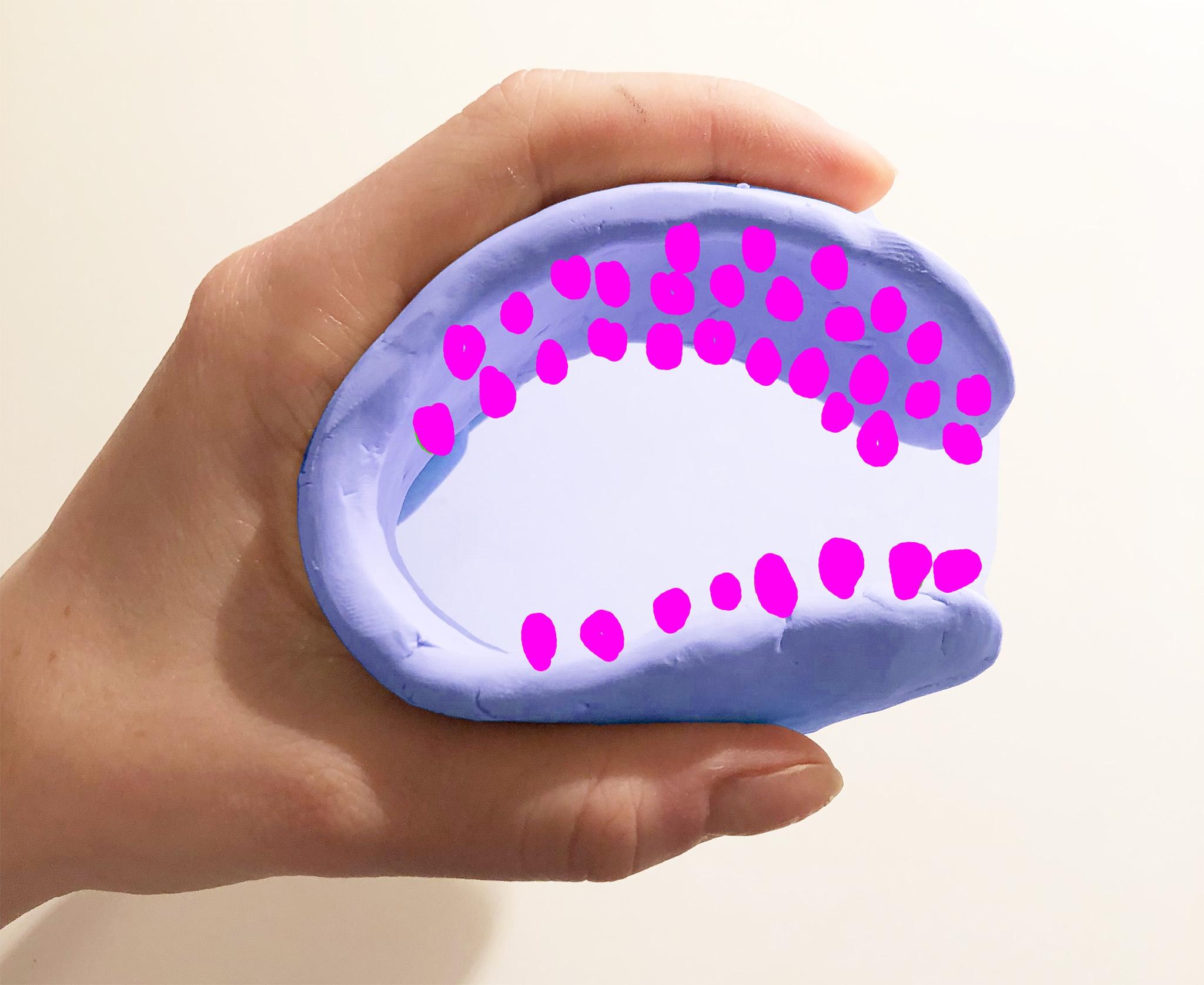CLEARLY BANG
You can’t see them, you can’t smell them, you can’t taste them, and yet they are quite common on conventionally grown fruits and vegetables – pesticides or the residues of them.
Due to the use of sometimes highly toxic pesticides in the global south, they come back into the EU through food imports and end up in our food cycle. To counteract this danger, I have focused on a design concept within the framework of „One material, one product“, which is intended to better protect consumers when peeling or handling fruit and vegetables, because many residues are found on the peel and skin.
I distinguish between inedible and edible peel when it comes to the application of the design ideas. Inedible peel is about not having to touch the peel when peeling, therefore the idea of flexible tongs and a supporting as well as protective thimble.
According to recent studies, fruits or vegetables with edible peel should be soaked in warm water together with baking soda for 15 minutes to optimally dissolve pesticide residues. In order to subsequently make the food fit for consumption, a brush was developed to remove the last superficial residues from the food. In the designs, attention was paid to ergonomics and the specific use of the material with a high protective factor.
The decisions for the individual designs were also closely linked to the properties of the material Elastollan from BASF’s TPU family. This material stands for maximum reliability, consistent product quality and cost efficiency. The flexibility and feel of Ellastolan were also decisive for the individual designs of the tools. The material and the tools are dishwasher safe, can be produced industrially by injection molding and since the whole concept is made out of only one material everything can be optimally recycled.
Theresa Schwaiger, MA WS2021/22,
project:
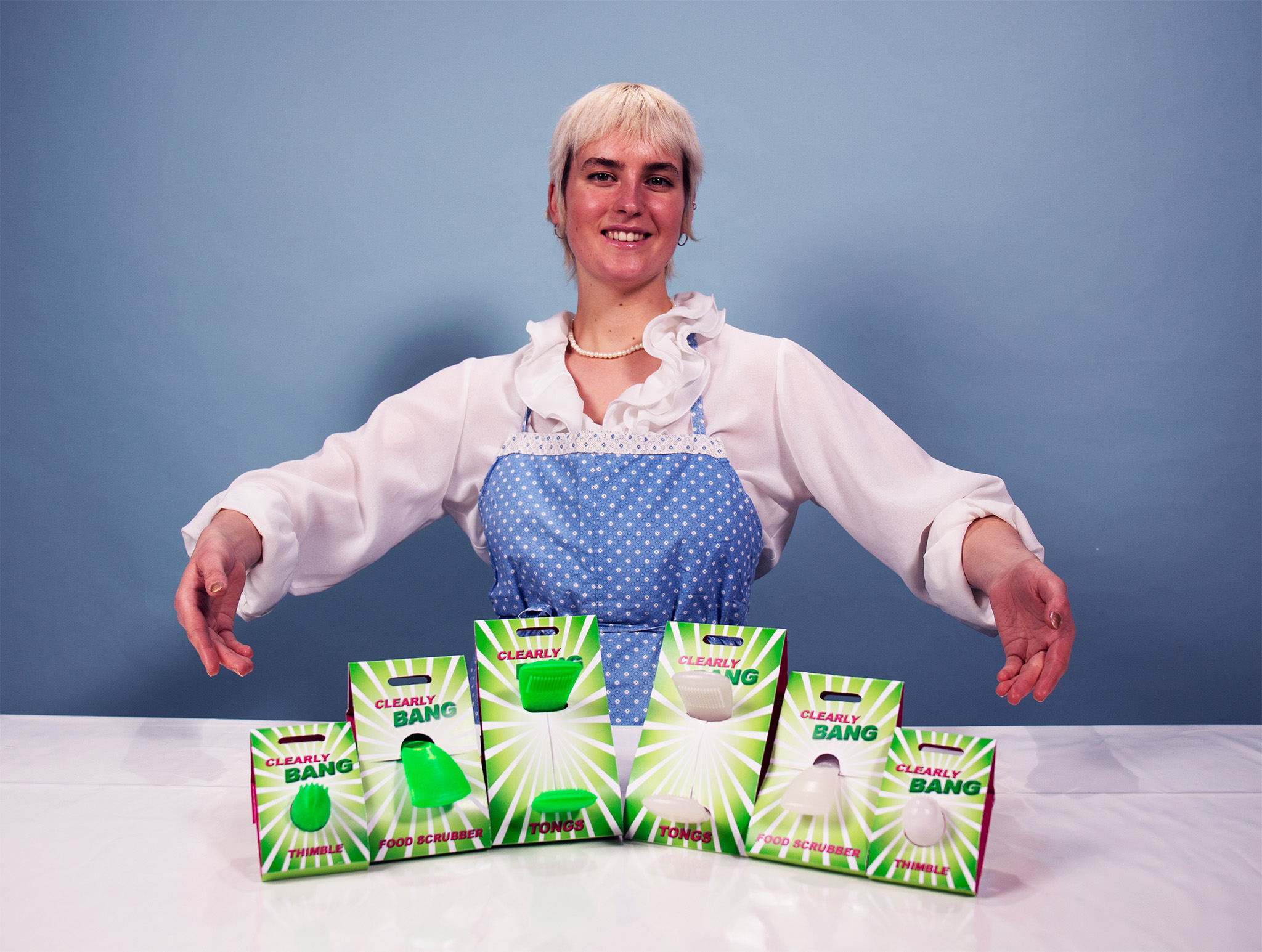
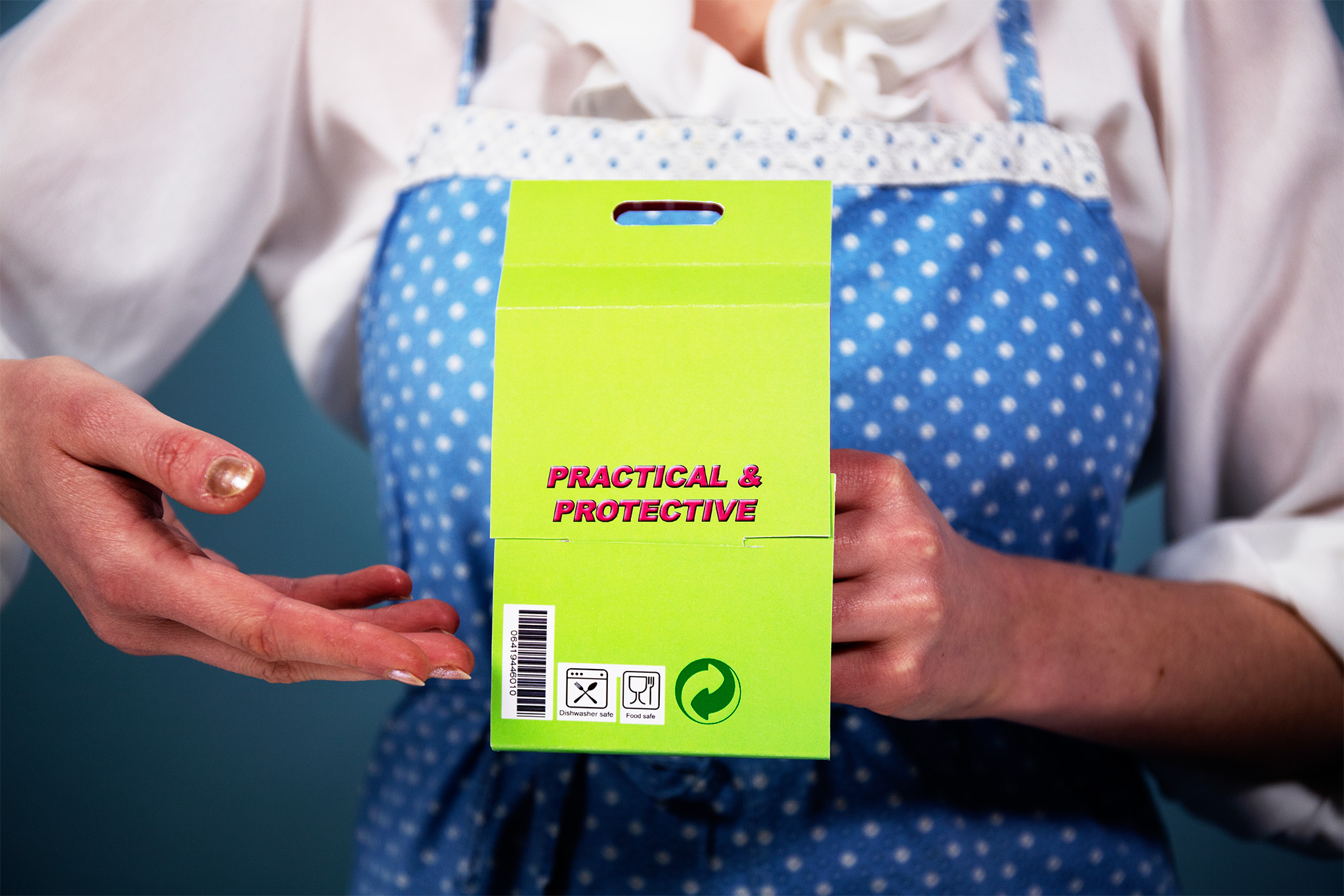
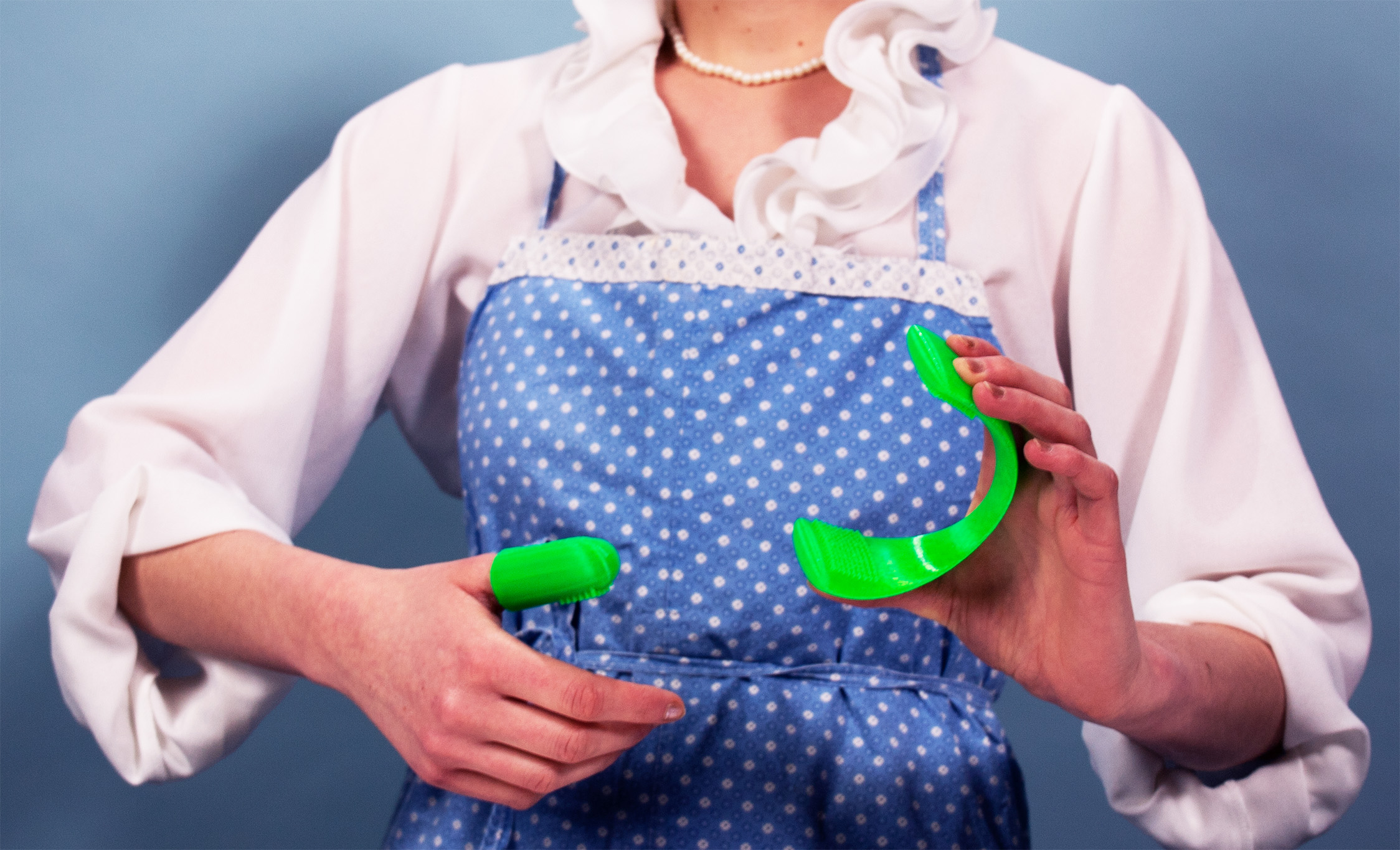



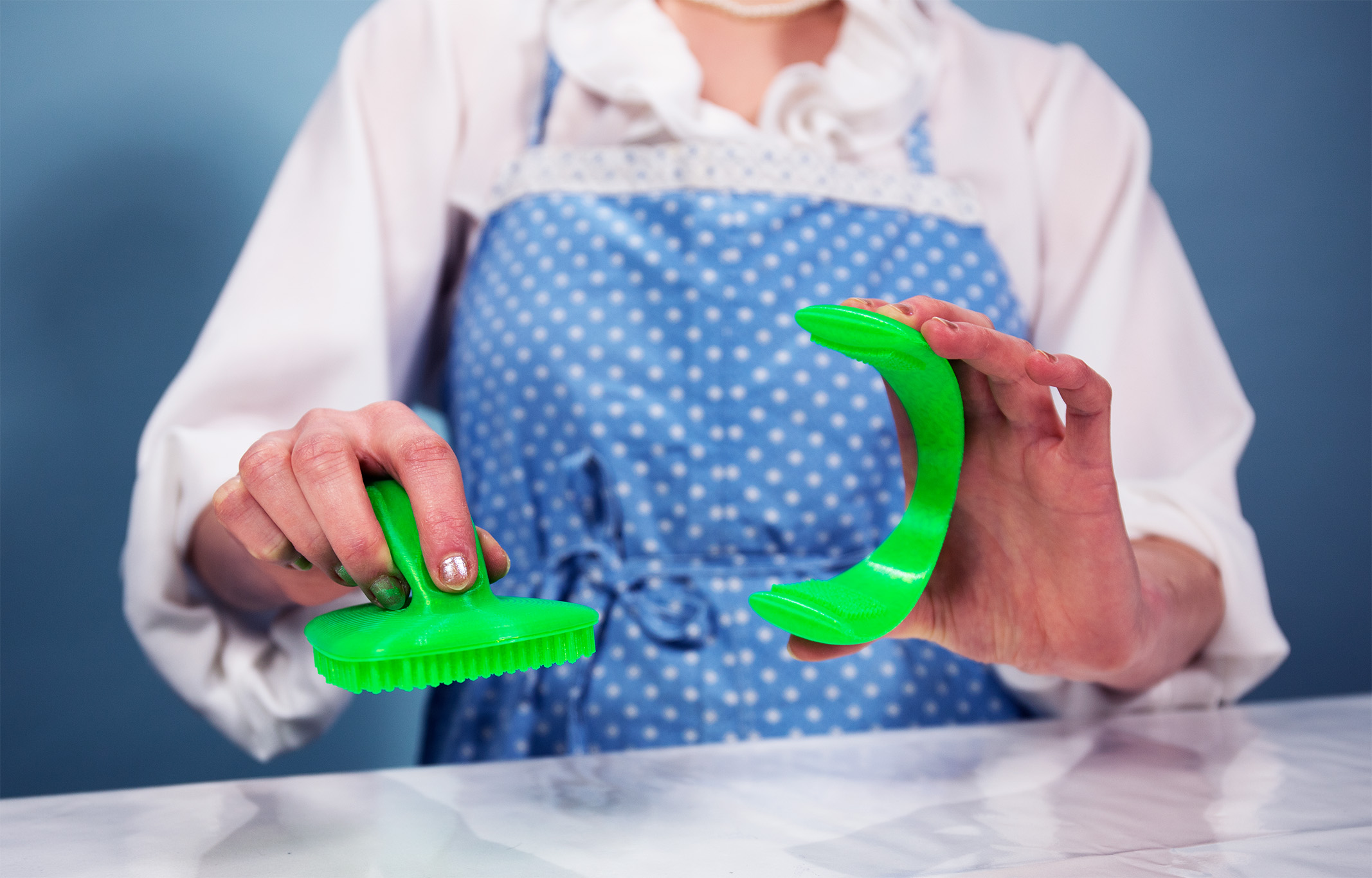
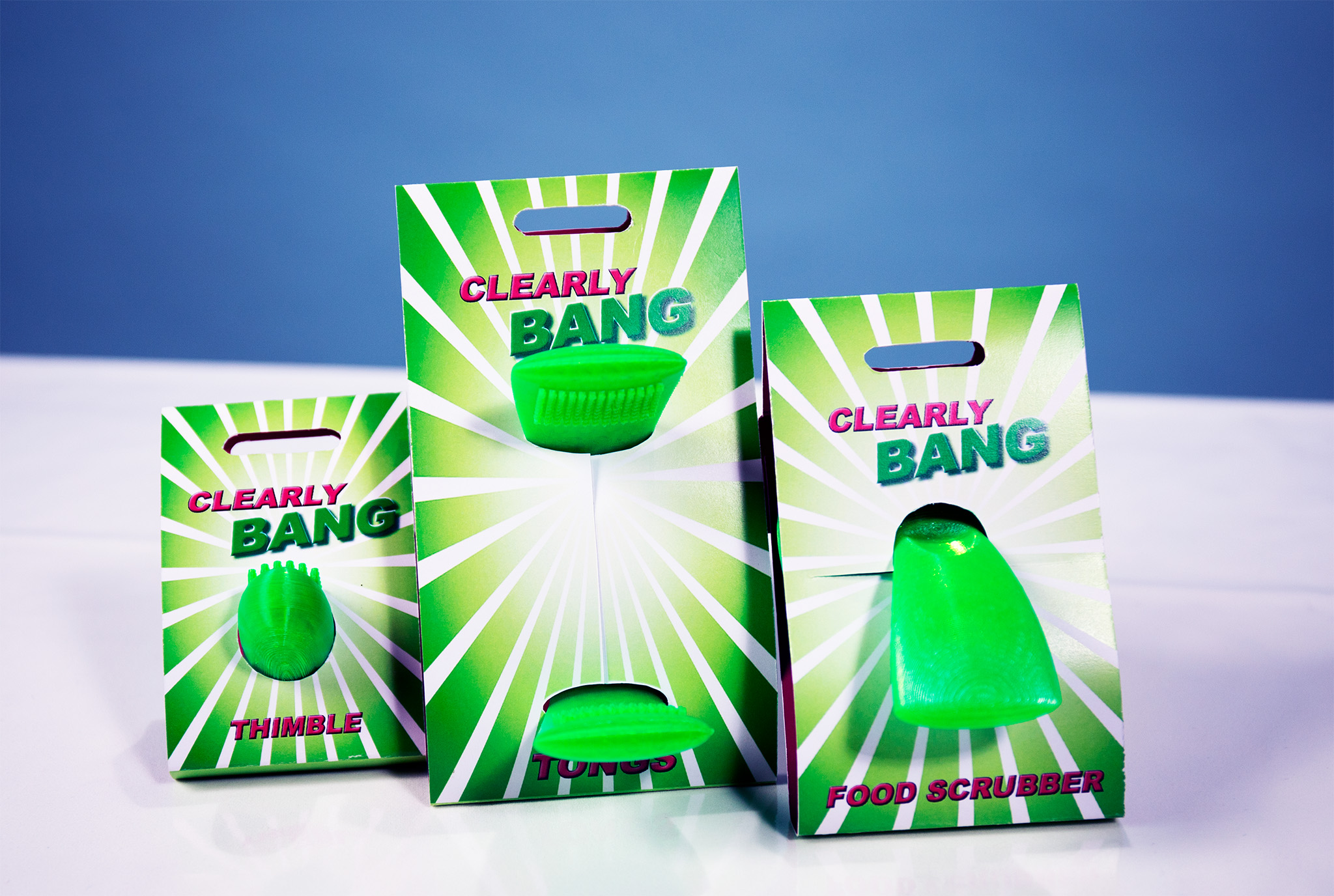
process:
